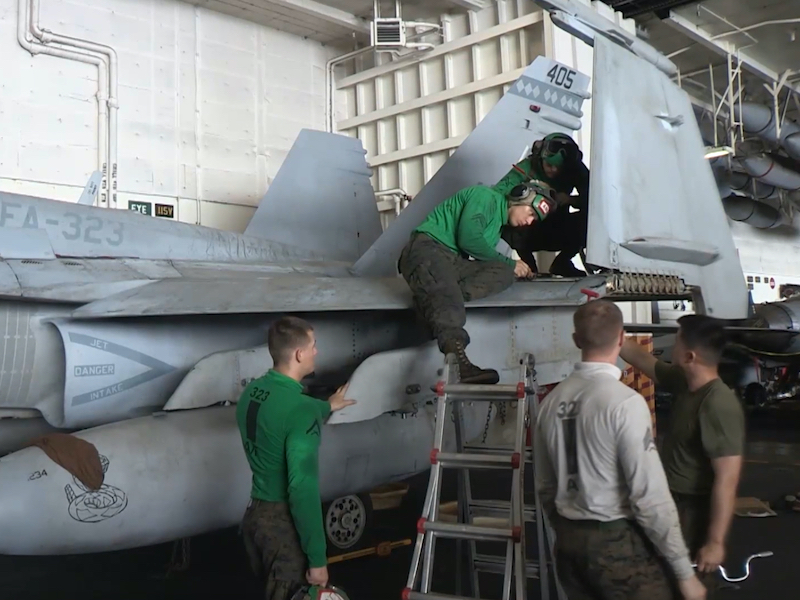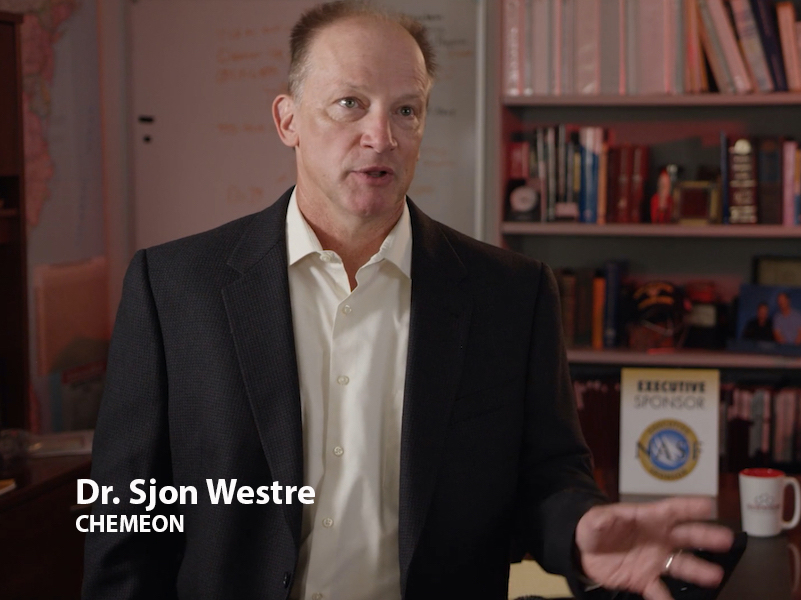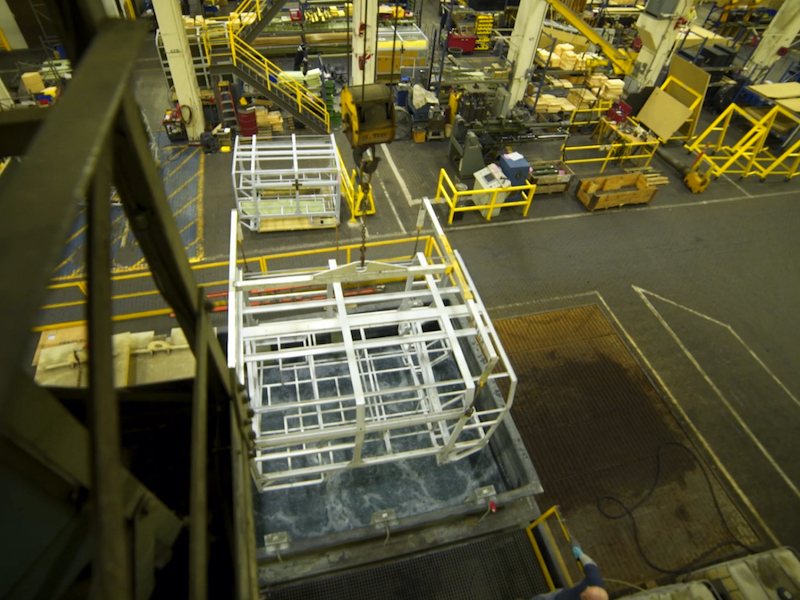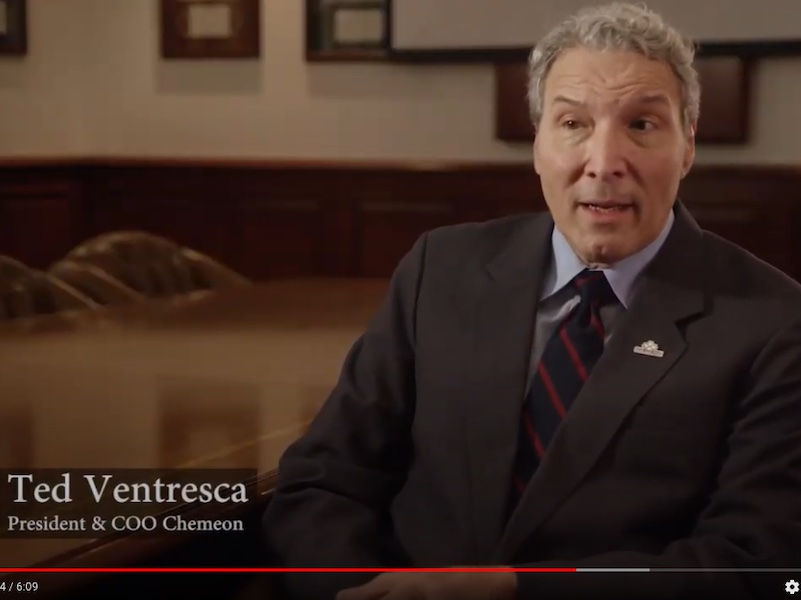Tens of thousands of scientists and engineers work in U.S. Department of Defense (DoD) labs inventing technologies that benefit the U.S. defense mission and the American public. This is the story of a DoD invention that became successful through technology transfer.
Military assets such as planes helicopters and marine craft are under constant assault from the elements leading to corrosion that requires regular and costly maintenance. Traditionally, hexavalent chromium compounds have been used to improve corrosion resistance and bonding of paints; they work well, but they have one big problem
 “The problem is it's a carcinogen, so it's even though it works very well technically, it's toxic to people,” says Craig Matzdorf, a senior engineer in the Materials Engineering Division at the Naval Air Warfare Center’s Aircraft Division (NAWCAD).
“The problem is it's a carcinogen, so it's even though it works very well technically, it's toxic to people,” says Craig Matzdorf, a senior engineer in the Materials Engineering Division at the Naval Air Warfare Center’s Aircraft Division (NAWCAD).
Matzdorf and his team of researchers at the NAWCAD was tasked with developing an effective and safer alternative.
“Innovation and the development of new technologies is a core function of the warfare center,” says Leslie Taylor, NAWCAD’s executive director. “Our successful partnerships with industry allow us to transition our innovations to the fleet.”
THREE YEARS OF RESEARCH
 After three years of research, the NAWCAD team came up with a non-toxic comparable performing replacement: tri-chromium pre-treatment (TCP) that had one other very attractive benefit.
After three years of research, the NAWCAD team came up with a non-toxic comparable performing replacement: tri-chromium pre-treatment (TCP) that had one other very attractive benefit.
“It was designed to be a drop-in replacement, so you don't have to buy any new special equipment,” Matzdorf says. “You can use it in the same process tanks, and the same spray equipment.”
It was now up to the NAWCAD technology transfer office and TechLink, a DoD partnership intermediary, to find industrial partners and commercialize TCP.
“We contacted about 35 companies and provided data to them,” says Dan Swanson, senior technology manager at TechLink. “17 wanted to get samples of the material and test samples.”
CHEMEON STEPS UP
 One of the companies that requested samples was Chemeon Surface Technology, based in Minden, Nevada, which was experienced in anodized production.
One of the companies that requested samples was Chemeon Surface Technology, based in Minden, Nevada, which was experienced in anodized production.
“We wanted to make a commercial product out of it,” says Dr. Sjon Westre, Chemeon’s vice president of technology. “That's a very different thing than saying ‘we'll mix up five liters of this and we'll apply it,’ or 100 liters of it. We're talking thousands of gallons, and a lot of thought has to go into what do you have to do to scale that for commercial.”
After evaluating the TCP technology and its commercial potential, seven companies applied for licenses. Five licenses were granted; four in North America and one international license.
TCP is being implemented by the Navy across a range of assets, including legacy aircraft like the FA-18, and in the construction of ships such as the new littoral combat ship USS Independence. The U.S. Air Force is using TCP and the F-22 Raptor and on unmanned aerial vehicle like the RQ-4 Global Hawk from Northrop Grumman and the U.S. Army on its Apache, Chinook, Blackhawk and Kiowa helicopters, as well as an array of ground vehicles.
Maintenance facilities across the DoD are adopting TCP, as are a broad spectrum of industries.
“We are seeing usage from aerospace to prime contractors, and by the DoD and divisions of the DoD directly” says Ted Ventresca, Chemeon’s president and chief operating officer. “It’s also being used by auto manufacturers and consumer electronics.”
USES IN OTHER INDUSTRIES
 The uses of TCP — from heat exchangers to telecommunication, aerospace, electronics and transportation — will expand exponentially after hexavalent was banned in Europe in 2017, and sharply curtailed in Asia.
The uses of TCP — from heat exchangers to telecommunication, aerospace, electronics and transportation — will expand exponentially after hexavalent was banned in Europe in 2017, and sharply curtailed in Asia.
TCP has generated tens of millions of dollars in revenue for the licensees, created jobs and helped small companies grow.
“What enabled things to go right here was that there was a great team here at NAWCAD, a cooperative attorney, a tech transfer team and an inventive team,” Swanson says. “They all got behind the idea of moving this technology out of the laboratory and into the marketplace.”
Dr. Westre says the support amongst all the groups has been very good, and is one of the main reasons why the TCP technology is progressing the way it is.
“If I had questions, I could get to somebody who knew the answer,” says Dr. Westre. “Somebody who's listed on the patent, I could get a hold of them.”
Says Ventresca: “The relationship with TechLink allows that conversation, and that creative process to move along.”
MORE TO COME
Swanson and Taylor say the development of TCP is a great success story of technology transition and transfer for NAWCAD, and they continue to invest in cutting-edge technologies for the benefit of war fighters.
“We are actively engaged in small and large businesses alike to transition our technologies,” Taylor says.
For more information about work with DoD to license inventions and start a business, contact TechLink at techlinkcenter.org. Visit https://www.chemeon.com.




































